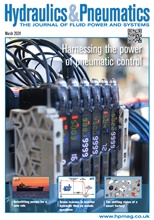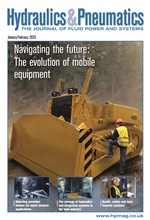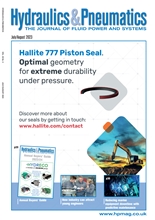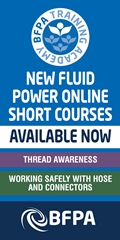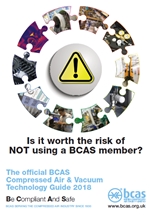Industrial hose assembly: tips for specification, installation and maintenance
By Mark Carpenter, product manager industrial hose, Eriks UK.
Many perceive hoses and fittings as commodity items, and as a consequence they are often poorly specified and installed, then ignored once they have been fitted into machinery. However, due attention should be paid as the incorrect specification of hoses and fittings can lead to rapid deterioration over time and can often cause a sudden and catastrophic failure. In this article, I would like to offer nine top tips for the correct specification and maintenance of hoses and fittings, to extend their operational life and avoid costly failure.
Be aware of the dangers
Hose failure poses a major health and safety risk to employees and can also be hazardous to operating equipment. It is important to be aware that these are dangers present in both high and low pressure applications, especially if hoses are carrying steam or hazardous chemicals.
Consider newly enhanced components
Advances in technology mean that engineers have the option to specify bespoke industrial hose assemblies. Bespoke assemblies should be considered as they are lighter and stronger, and can meet the needs of several different applications. For example, they can meet strict industrial hygiene standards to serve food and pharmaceutical applications, while exceptionally robust metallic hoses are ideal where there is a need to withstand extreme high temperatures and pressures.
Match the fitting to the hose
Weather exposure, process conditions and the pressure of the process fluid, can significantly affect the lifespan of a hose. It is important to ensure that appropriate fittings are used with flexible industrial hose products, as the correct specification will help engineers to maintain the productivity and quality of the hose output.
Specify correctly for low pressure
O-clips and worm drives are suitable for low pressure, aspiration, and suction type hoses – typically below 4 bar – and are easy to fit and remove. These components need to be used with relatively soft-walled hoses so that the clip can apply sufficient pressure on the inner wall of the hose to form an effective seal. They also require careful installation, as misalignment or over tightening may cause leaks.
Specify correctly for high pressure
In higher pressure applications, swaged or crimped connections offer an excellent degree of security. These leak-free connections work by deforming a metal ferrule and hose tail permanently into place around the end of each hose. In many instances, the ferrule is designed to cut through the outer hose wall to interlock with the internal layers of the wire hose reinforcement. Remember that these fittings have to be formed using a special machine that requires a qualified operator.
Allow time for preparation
When planning a hose installation, it is important to bear in mind that, although swaged or crimped connections produce extremely reliable results, these types of hoses have to be produced to order off-site. This does not allow urgent repairs or replacements to be conducted on-site, so you will need account for the time this can take.
Consider an on-site option
There are some highly effective safety clamps on the market in aluminium, brass and stainless steel, which provide the option of on-site fitting and adjustment, plus a high degree of security and seal integrity in comparison with crimped fittings. These clamps comprise of two interlocking hemispherical shells bolted around the hose end using a locking collar, with an inner safety rim that fits over the hose shank collar. If the bolts are correctly tightened, the fitting cannot be pulled from the hose, providing an effective, leak-free seal for hose pressures up to 25 bar.
Operate a consistent maintenance programme
The need to protect productivity and profitability is great in all applications, but the issue can be critical in industries such as food and beverage, chemical, or pharmaceutical processing, where cracked, perished and leaking hoses may lead to contamination, waste, and plant downtime. Once you have established the right hose assembly for the application and carried out the correct installation, complete hose assemblies should be checked regularly for damage and wear.
Consider a hose testing service
Some suppliers now offer a cost-effective hose testing service, where hose assemblies are visually inspected, pressure tested and also checked internally with a fibre-optic camera. Once these tests are completed, the customer is advised of any failed hoses before they can be re-fitted to the plant. The results can also be logged in an online asset register to build a valuable data resource. This can assist with long term plant maintenance programmes and play an important role in helping users to cut hose replacement or repair costs.
Needless to say, there is more to hose and fitting assembly than first meets the eye. Through careful specification, installation and maintenance, costs can be cut and employee safety assured – surely it’s a no-brainer.
-
Smart Manufacturing & Engineering Week
05 - 06 June, 2024
NEC, Birmingham -
HILLHEAD 2024
25 June, 2024, 9:00 - 27 June, 2024, 16:00
Hillhead Quarry, Buxton, Derbyshire UK



